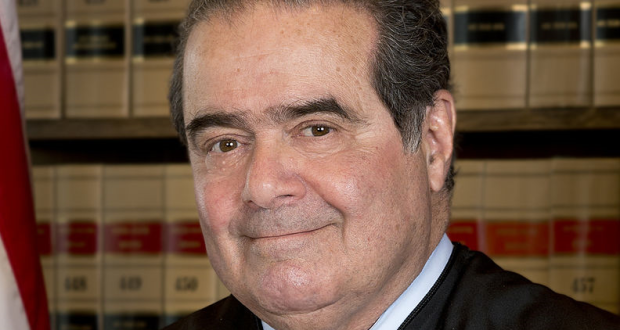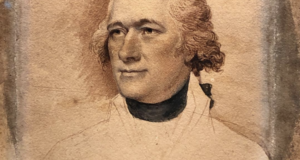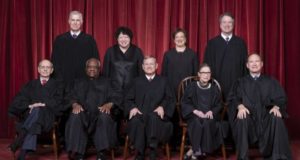A legal lion passed away recently. One might argue that the death of Justice Antonin Scalia means much more for the American legal audience than the Canadian one. After all, Scalia’s death tossed the Supreme Court of the United States into the centre of an already contentious election season and brought to the forefront the divisively partisan tendencies of the U.S. Congress. The Supreme Court of Canada has rejected Scalia’s notion of constitutional originalism, most notably in the seminal Charter of Rights and Freedoms case, BC Motor Vehicle Reference. Instead, drawing upon the Judicial Committee of the Privy Council in the Persons Case, the Supreme Court has conceived of Canada’s Constitution as a “living tree” which must grow without reference to the past. It must accommodate new realities, according to our Court.
Constitutional progressivists in Canada have transformed originalism into a pastiche; but as any serious scholar will admit, it is far more sophisticated than mere “ancestor worship.” And while Scalian originalism is clearly at odds with the living tree approach, it bears a striking resemblance to another important facet of Canadian constitutional interpretation: the purposive approach heralded by the Supreme Court of Canada in Hunter v Southam.
Let’s consider it: purposive interpretation sets limits on the protection afforded by constitutional rights. In other words, whether or not a constitutional infringement is found depends on whether the activity advanced by the claimant is protected by the scope of the right. The purposive approach to constitutional interpretation fixes the point of constitutional crystallization—when the scope of protection afforded by our Constitution is determined— at the time the purpose of the right becomes clear, which, practically speaking, means the early days of Charter interpretation. To that end, as Justice Dickson noted in Big M Drug Mart, it is important not to overshoot the actual purpose of the right or freedom in question. Similarly, originalism operates by discerning the scope of the right at the time of the founding (either as originally understood by the public or by the framers themselves). Originalism, contrary to popular belief, does not concern itself with whether this or that specific thing was protected by the Constitution at its founding. It rather asks whether the Constitution protected certain categories of conduct, whether, in other words, a thing fits into the scope of the Constitution, as originally understood. In this sense, both philosophies define the scope of protection afforded by a particular right at a particular point of time. The purpose of the right (its scope) does not evolve over time under purposive interpretation or originalism. So, while new technological issues may crop up which require the Constitution to respond, it can respond—so long as the scope of protection afforded by the right remains the same. In this sense, originalism and purposive interpretation are not so different after all. Both provide predictable doctrinal methods to analyze Constitutions, provided they are applied correctly.
Admittedly, Justice Scalia would probably have objected to this characterization. He was vehemently opposed to the concept of “purposive” interpretation, at least in the American context. In one sense, he has reason to be concerned. If one misapplies the purposive approach, a right’s purpose can be stated at such a high level of generality so as to provide for an overly generous, and even limitless, protection. Moreover, Justice Scalia would have been worried about unelected judges expanding the scope of a highly general right over time. These are valid concerns about the purposive approach. One need only look at the Canadian context where “purposive” and “generous” are often conflated by the Supreme Court, despite the differing nature of the terms. However, the comparison between originalism and the purposive approach should be based on the proper application of each approach, not instances of misapplication. On that score, Justice Scalia himself provides an illustrative example of the potentially fruitful marriage between purposive interpretation and originalism when properly applied in a disciplined way.
In Kyllo, the Supreme Court of the United States was faced with the question of whether the use of thermal imaging by the police to determine heat radiation from a home constituted a search under the Fourth Amendment. Obviously, thermal imaging was not something envisioned by the Founders in 1776. Yet, Justice Scalia, writing for the majority, held that the Fourth Amendment at the time of founding would have protected against such a search. This is because the scope of the Fourth Amendment protects the home from unauthorized intrusions by the state. Thus, Scalia found the search unconstitutional. The question was not whether thermal imaging was envisioned by the Founders in 1776—of course, that would lead us to the ludicrous answer that the Fourth Amendment had nothing to say about this type of search. The question was whether the home was protected from unlawful searches and seizures. The answer is, of course, yes.
Kyllo was predictable because the purpose of the Fourth Amendment had already been determined in days gone by. In this sense, the Supreme Court of the United States did a better job of purposive interpretation (or originalism based on the scope of the right) than our Court has. In at least two further respects, the SCC has undermined its own purposive approach, to the detriment of the rule of law. To the extent that Justice Scalia’s death can remind us of the importance of consistent doctrine interpreted in concert with our Charter rights, we should pay attention to his example.
The first area of doctrinal confusion is in administrative law. In Doré, the SCC crafted a mechanism by which claimants can challenge the decisions of administrators in implementing legislation under the Charter. Upon judicial review, courts are to determine whether or not the decision maker balanced the purpose of the statute in question against the “Charter values” at play (my emphasis). Note that, upon judicial review, the question is not whether the claimant’s theory of the case falls within the judicially-determined purpose of the right. The Court’s approach asks administrative decision makers to go on a treasure hunt for amorphously-defined and highly general constitutional “values” underpinning each right. We have no idea whether Charter values track the Charter right itself, or whether they provide some broader protection inconsistent with purposive interpretation. To the extent that this approach undermines the purposive approach to constitutional interpretation and consistent application of coherent doctrine, a dose of “originalism” might do us good. Charter values, whatever those are, are not doctrinally clear as are Charter purposes.
The second area of doctrinal confusion concerns freedom of association under s.2(d) of the Charter. The recent decision in MPAO was the latest chapter in the Court’s collective bargaining rights book—a convoluted and incoherent read at best. In that case, the majority held that that the right to collective bargaining (in the Wagner style) was a right protected under s.2(d) of the Charter. This is despite the holdings of the Court in two earlier cases, Fraser and Health Services, which provided that s.2(d) simply protects an individual’s ability “to act in association with others to pursue common objectives and goals.” The jurisprudence under s.2(d) traditionally did not mandate a particular style of collective bargaining, but merely ensured a meaningful dialogue between employee and employer. Now, the Court has seemingly expanded the scope of the right to mandate a particular style of bargaining (indeed, this was the basis of Justice Rothstein’s dissent in MPAO). MPAO was followed by Saskatchewan Federation of Labour, in which a 5-2 majority of the Court (with Justice Rothstein again dissenting) held that s.2(d) protects the right to strike, and thereby overruled twenty five years of its own jurisprudence. These decisions have expanded the scope of s.2(d) and the Court has “overshot” the purpose of the right as originally understood.
Without a doubt, there are counter arguments to the above two examples. And there is more to be said about these cases that cannot be said in the context of this piece. That said, one conclusion is irrefutable. In many areas of public law, there is doctrinal confusion. In the two examples cited above, the confusion arises from an abandonment of a principled purposive approach.
All told, it is important to remember what Justice Stratas of the Federal Court of Appeal recently discussed at a Canadian Constitution Foundation conference. He asked the audience to conduct a thought experiment. He envisioned a situation in which some future constitutional emergency arose leading to Charter infringements and the courts were called upon to intervene. He asked what we, as a society, would rather: judges deciding these infringements based on their own ideals and the passions of the moment, or based on consistent doctrine developed over time. To ask the question is to answer it. As Justice Scalia was fond of saying, Joe Six-Pack has the same moral compass as nine “patrician” judges on the Supreme Court. When it comes to a constitutional emergency like the one envisioned by Justice Stratas, we must rely on legal doctrine, not the morals of the moment.
He was not a perfect man, nor a perfect interpreter of Constitutions, but Justice Scalia’s lesson is simple: constitutional interpretation requires some fixed point of reference, or else interpretation is simply an exercise in free sailing, defined by the times. In Canada, we have well-worn tools of constitutional interpretation. We should use them to build consistent and predictable constitutional doctrine. The rule of law demands as much.
 Advocates for the Rule of Law
Advocates for the Rule of Law



